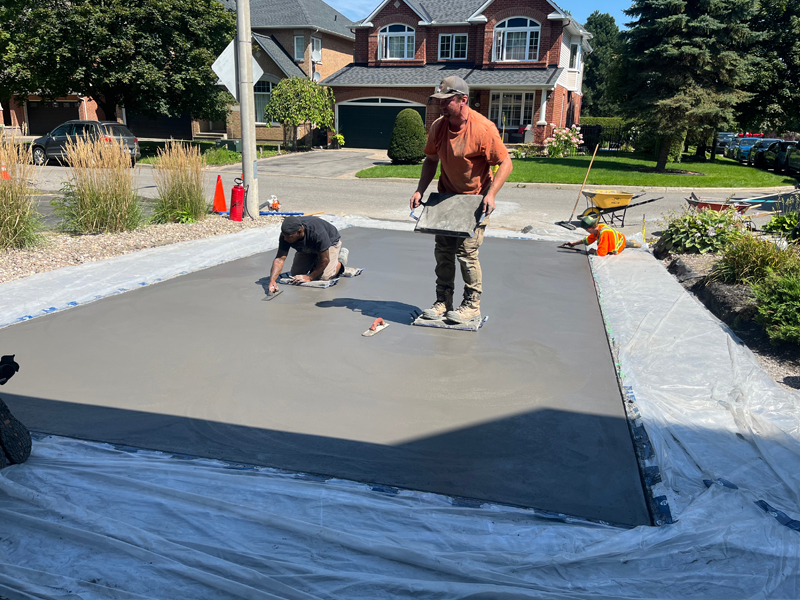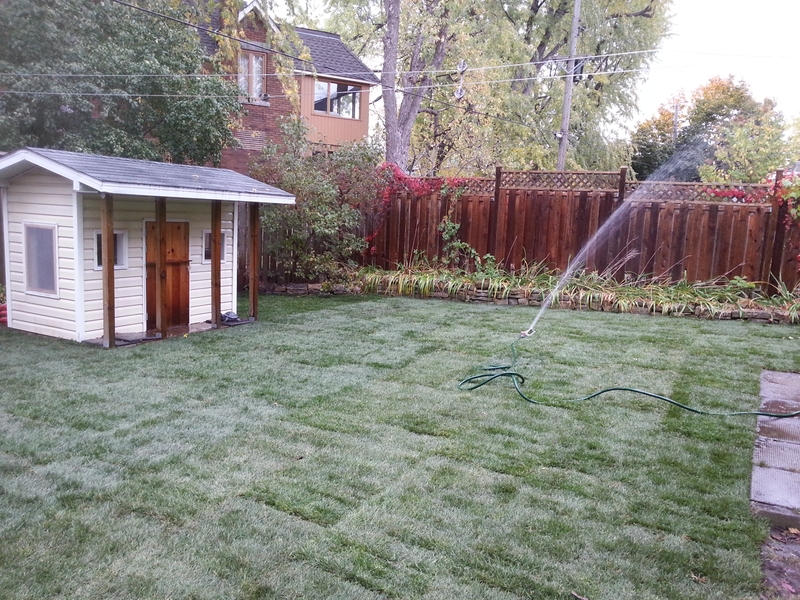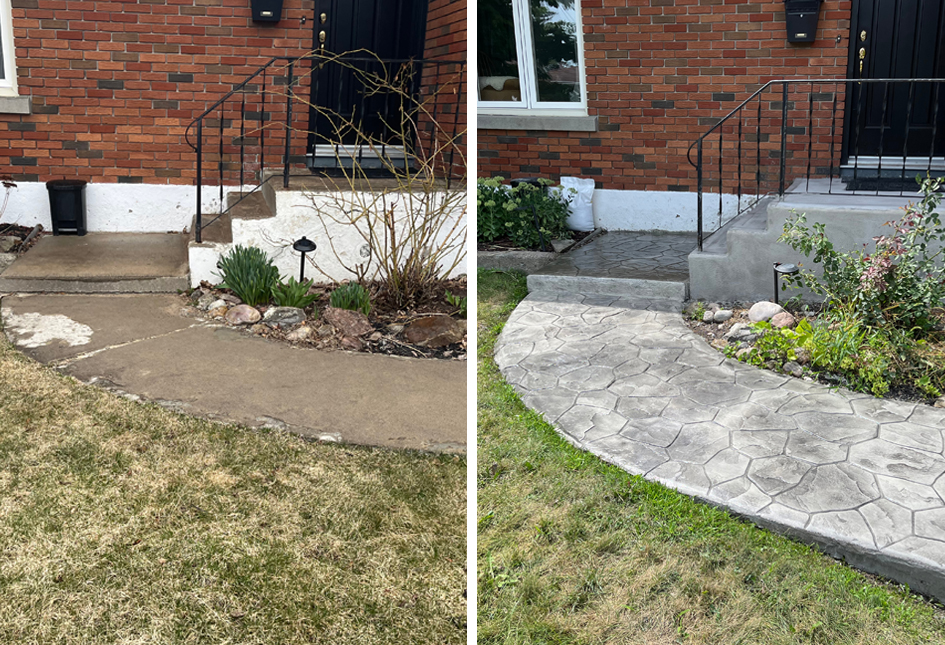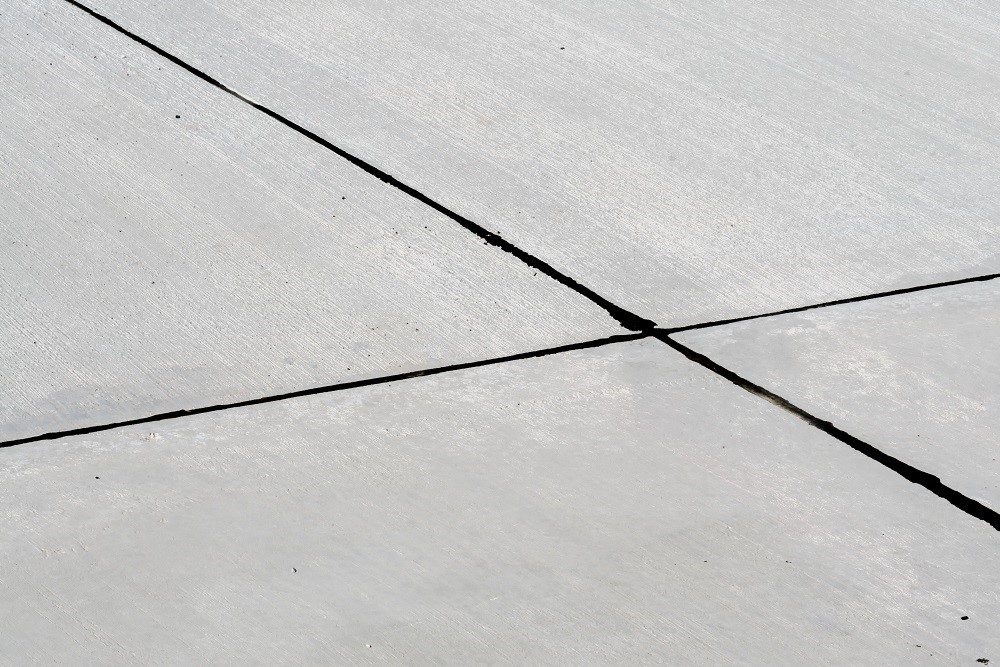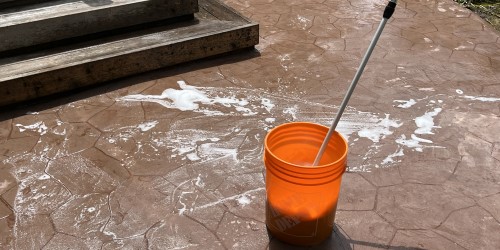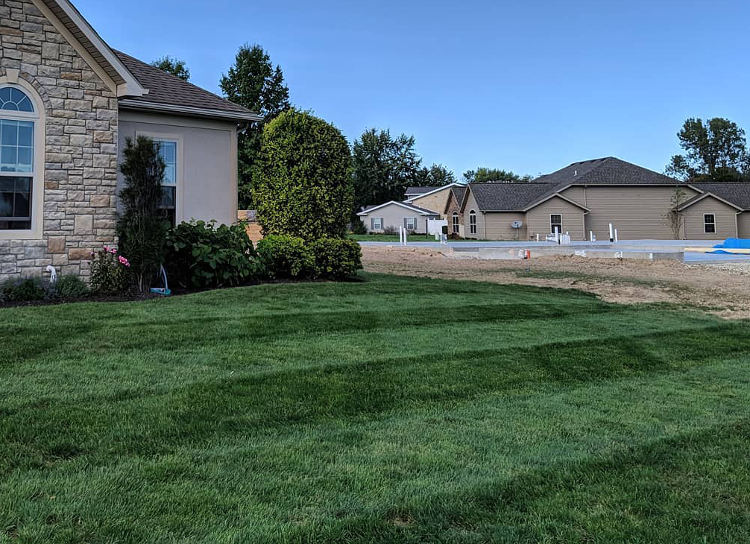If you're considering putting in stamped concrete on your property it is likely that you're also considering some other surfaces like interlock, broom finish concrete, asphalt or many others depending on the application. While stamped concrete has many advantages over its alternatives there are some important factors to consider before you make your decision. This article will go over some of the downsides of stamped concrete.
Cracking can occur - All concrete is susceptible to cracking and stamped concrete is no different. A concrete slab has the properties of a large piece of glass. In most conditions it will crack. There are many factors that lead to unsightly cracks and many methods that can be implemented to reduce or eliminate them.
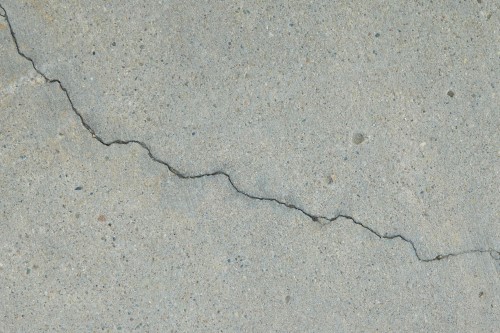
Damaged by de-icing salts - Salt itself does not chemically react with concrete and cause damage. The damage is caused when salt melts snow and ice during winter, water enters the pores of the concrete, then freezes and expands. This freeze thaw cycle happening many times over the course of winter causes chipping and flaking on the surface. A proper concrete sealer can prevent this from happening.
Difficult to remove and repair - Concrete is very difficult to remove. So if at some point you decide that you want to get rid of what you have, it will take a lot of work or be expensive to do. Stamped concrete is also difficult to repair because it is almost impossible to replace or patch a section and have it match perfectly with the original colour and pattern.
Slippery when wet - Depending on the stamp pattern, stamped concrete can be slippery when wet compared to other surfaces like interlock or broom finish concrete. The texture only patterns are most slippery while the interlocking stone or flagstone type stamps are less slippery. This issue can be mitigated however by applying an anti-slip sealer.
Maintenance - Stamped concrete must be maintained in order for it to stay looking sharp over the long term. Cleaning and sealing are the important maintenance tasks. To clean it simply sweep with a push broom and wash with a garden hose. It is also important to immediately remove spills of oil, grease or other substances that can cause stains. Sealing should be done every 2 to 3 years. A sealer will protect the concrete from being penetrated by oil, grease, dirt, chemicals or other substances. Sealing also protects the colour from fading due to exposure from UV light.
While stamped concrete does have its downsides, so do all other surfaces. Don't let these factors sway you from your stamped concrete vision. With proper installation and a little bit of maintenance stamped concrete will stay looking beautiful and practical for decades.



